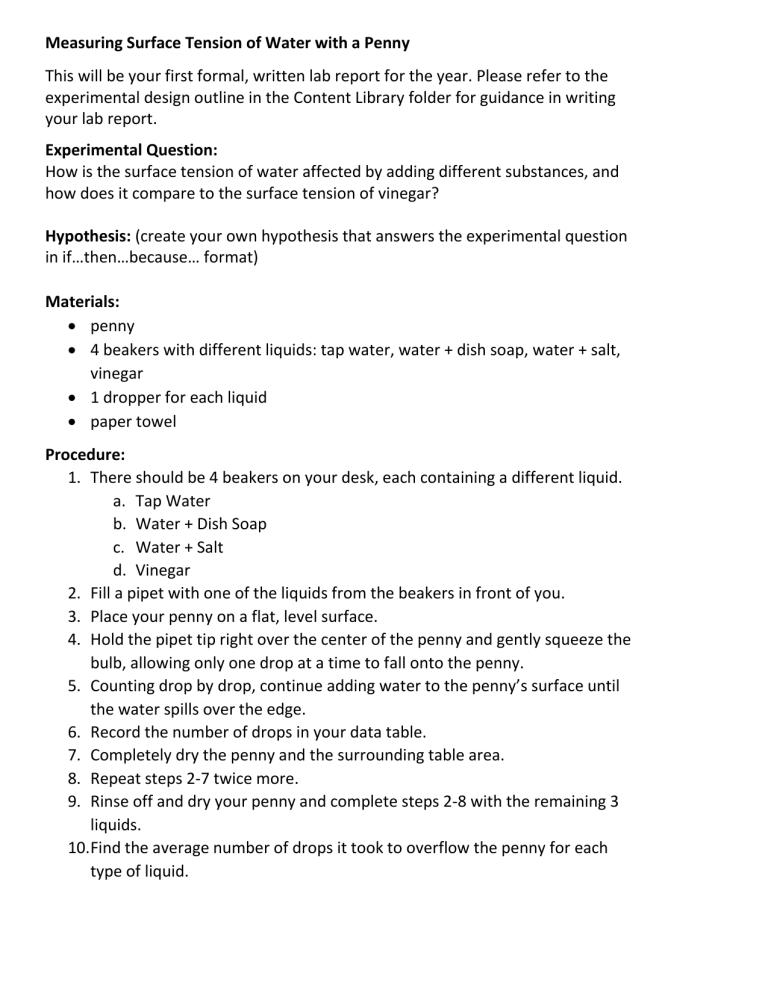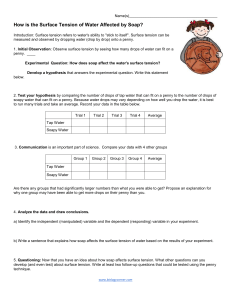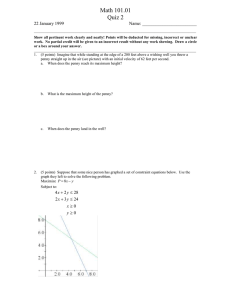
Measuring Surface Tension of Water with a Penny This will be your first formal, written lab report for the year. Please refer to the experimental design outline in the Content Library folder for guidance in writing your lab report. Experimental Question: How is the surface tension of water affected by adding different substances, and how does it compare to the surface tension of vinegar? Hypothesis: (create your own hypothesis that answers the experimental question in if…then…because… format) Materials: penny 4 beakers with different liquids: tap water, water + dish soap, water + salt, vinegar 1 dropper for each liquid paper towel Procedure: 1. There should be 4 beakers on your desk, each containing a different liquid. a. Tap Water b. Water + Dish Soap c. Water + Salt d. Vinegar 2. Fill a pipet with one of the liquids from the beakers in front of you. 3. Place your penny on a flat, level surface. 4. Hold the pipet tip right over the center of the penny and gently squeeze the bulb, allowing only one drop at a time to fall onto the penny. 5. Counting drop by drop, continue adding water to the penny’s surface until the water spills over the edge. 6. Record the number of drops in your data table. 7. Completely dry the penny and the surrounding table area. 8. Repeat steps 2-7 twice more. 9. Rinse off and dry your penny and complete steps 2-8 with the remaining 3 liquids. 10.Find the average number of drops it took to overflow the penny for each type of liquid. Data: Type of Water Trial 1 Number of Drops until Droplet Breaks Trial 2 Trial 3 Average Tap Water Water + Dish Soap Water + Salt Vinegar Analysis: 1. Create a bar graph of your average drops for each liquid type. 2. What is surface tension? 3. How is surface tension created by molecules pulling on each other? 4. Do you think dish soap increased or decreased the surface tension of the water? Why? What about the Vinegar? The salt?

